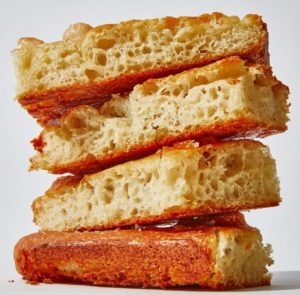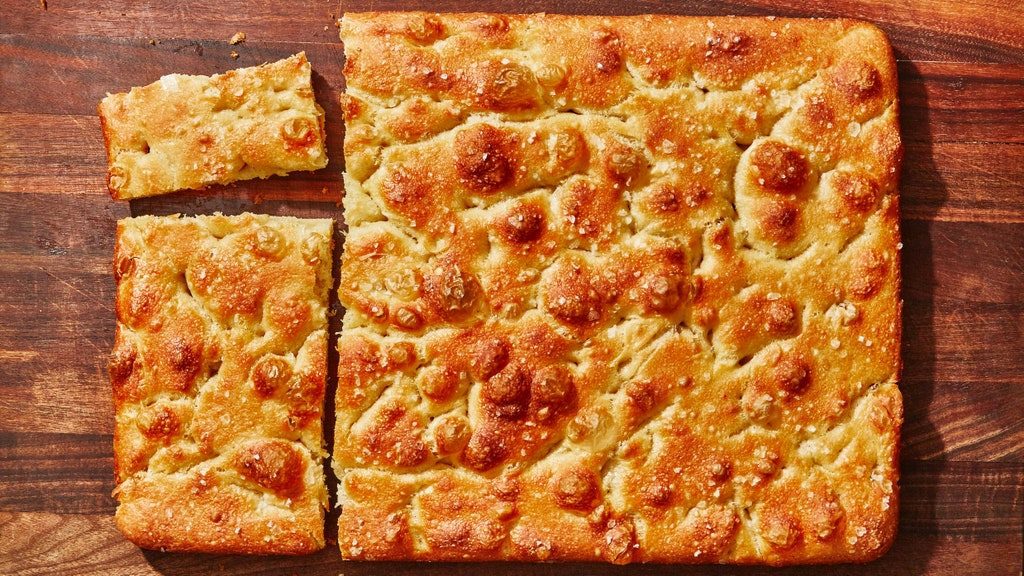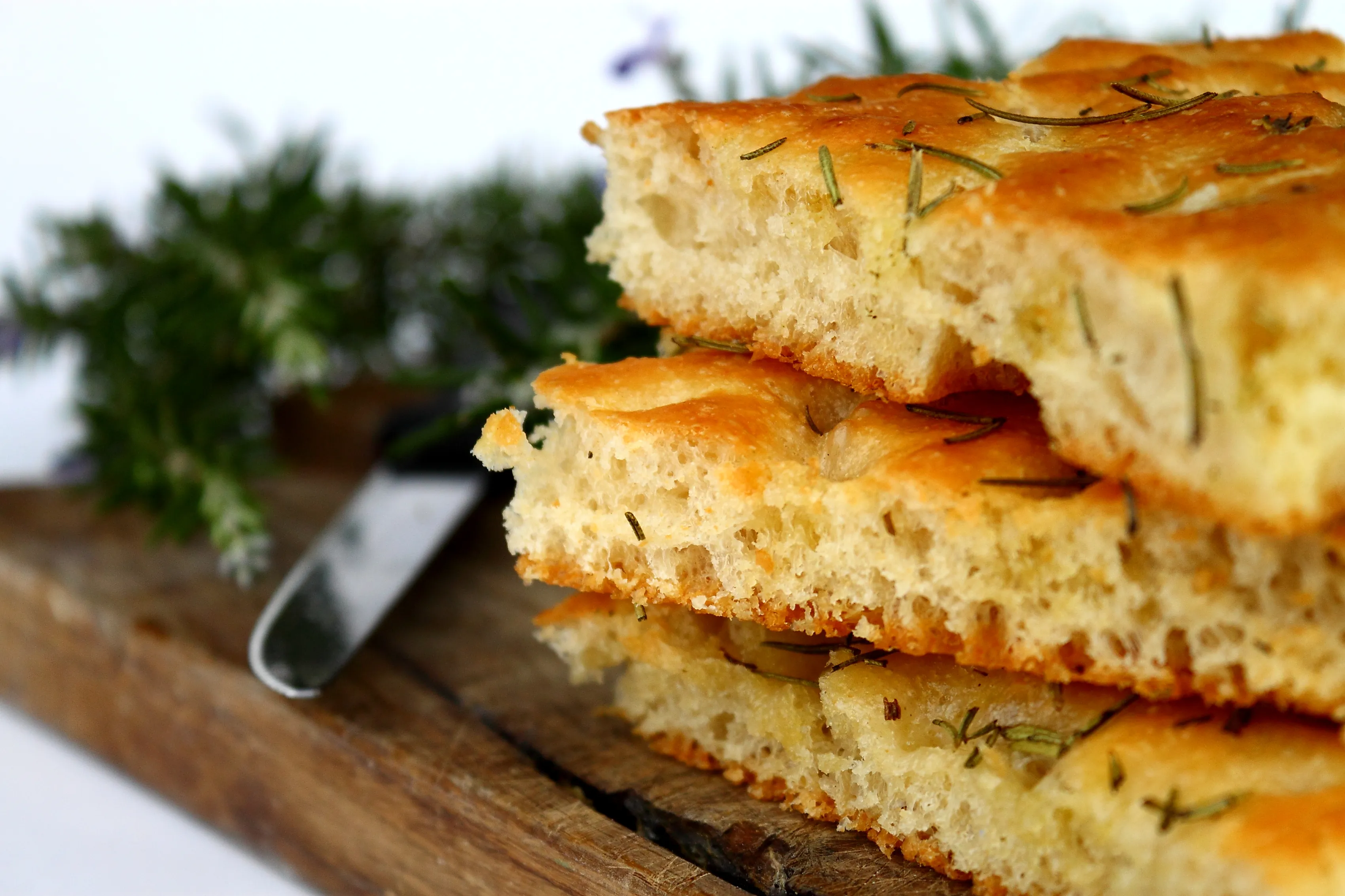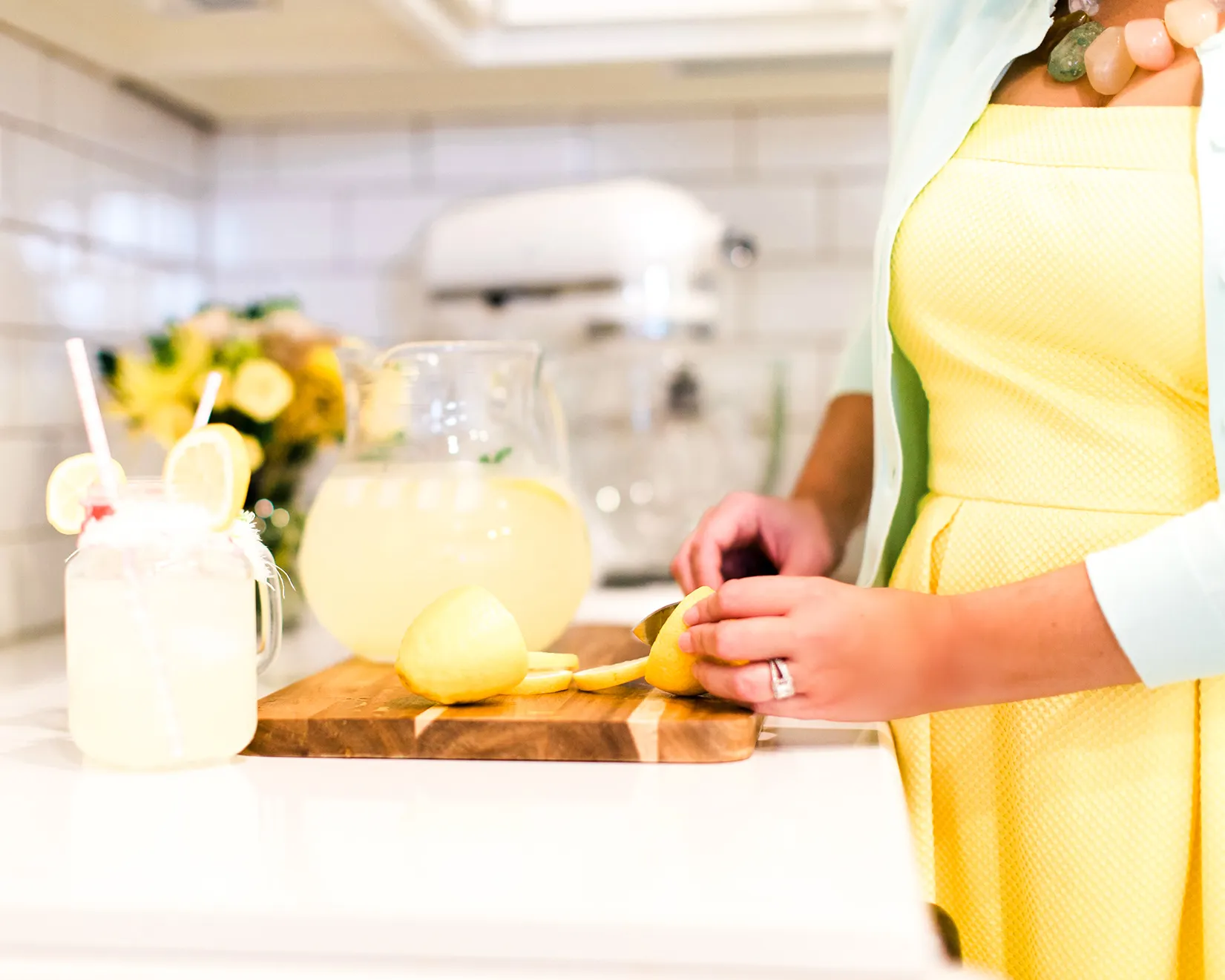Get it while it’s hot: You really can bake your own focaccia
I don’t know about you guys, but I don’t know how many more times I can bake chocolate chip cookies before I never want to see another chocolate chip again. Honestly, I’m running out of things to do, let alone bake, in this quarantine. And before you ask, I’m no Buddy from Cake Boss in the kitchen, so my reach typically doesn’t go very far past cookies and prepackaged cake mix. However, for the sake of my nonexistent summer body, I need to lay off the desserts and try out something a little less sweet.
Sarah Joy Hays, owner of CounterspaceBR, recently shared with us one of her favorite go-to bread recipes that’s just as delicious as it is easy. “This recipe always turns out,” explains Hays. “Follow the instructions and you will never want to buy bread at the grocery store ever again.”
According to Hays, a big part of following any bread baking instructions is using measurement by weight instead of volume. So if you plan on getting serious about bread baking, Hays highly recommends investing in a kitchen scale because the accuracy of measurements can make a world of difference in the final product.
If you feel like you aren’t doing it right, Hays wants to remind you that the Internet is your friend. Some of her favorite bread bakers to follow include @zoebakes, @bakerhands and @danthebaker. “All these fine folks are doing loads of tutorials and live videos and giving great instruction on bread baking during our times of quarantine and kitchen adventure,” says Hays.
Read on to find out just what your next in-the-kitchen activity entails:

Easy Focaccia
6¼ cups bread flour (30 oz. or 850g)*
2¼ tsp. active dry yeast (from one ¼-oz. packet)
Pinch of sugar
2 Tbsp. Diamond Crystal or 1 Tbsp. Morton kosher salt
5 Tbsp. extra-virgin olive oil, divided, plus more for greasing and drizzling
Flaky sea salt
*Tip from Hays: If you don’t have bread flour, it’s A-OK. The biggest difference between bread flour and all-purpose flour is the protein content. Yes, flour has protein! If you are able to use bread flour there is a higher protein content and that higher protein content produces lots of gluten. Gluten is what makes bread chewy and delicious. So, if you need to sub in all-purpose flour, your bread just won’t have quite the same texture.
Combine flour and 2½ cups room-temperature water in the bowl of a stand mixer fitted with the dough hook. Mix on low speed, scraping down sides and hook as needed to incorporate any dry flour, until a shaggy dough forms. Remove dough hook and cover bowl with plastic. Let sit while you prepare the yeast (you can leave the dough in this state up to 2 hours).
Stir yeast, sugar and ½ cup warm water with a fork in a small bowl to dissolve. Let sit until yeast is foamy–about 5 minutes.
Pour yeast mixture into stand mixer bowl and mix on low speed until dough absorbs all additional water–about 1 minute (pulse mixer on and off a couple of times at very beginning to prevent liquid from splashing over the sides). Add kosher salt and continue to mix, increasing speed to medium, until dough is extremely elastic and very sticky (it will look more like a thick batter and will stick to sides of bowl)–about 5 minutes.
Pour 3 Tbsp. oil into a large (preferably glass) bowl and swirl to coat sides. Scrape in dough with a large spatula or flexible bench scraper. Cover and place in a warm spot until dough is doubled in volume–about 2 to 3 hours. If using a glass bowl, it’s helpful to mark the position of the dough at the beginning so you can accurately assess the rise (a dry-erase marker or piece of tape works).
Drizzle 2 Tbsp. oil over an 18 x 13-inch sheet pan and use fingertips to rub all over bottom and sides. Using large spatula or flexible bench scraper, fold dough inside bowl a couple of times to deflate, then scrape onto prepared baking sheet. Using oiled hands, lift up dough and fold over onto itself in half, then rotate baking sheet 90 degrees and fold in half again. Cover dough with a piece of well-oiled plastic and let rest 10 minutes to let gluten relax.
Uncover and go back in with oiled hands, gently stretching dough (to avoid tearing) across length and width of baking sheet in an even layer, working all the way to edges and into corners. If dough starts to spring back, let sit 5 to 10 minutes and start again. Cover again with same piece of oiled plastic and chill at least 8 hours and up to 24.
Let sheet pan sit in a warm spot until dough is puffed and bubbly and nearly doubled in height–about 45 to 65 minutes (if you’re using a standard half sheet pan, it will have risen to the very top of the sides). Meanwhile, place a rack in center of oven; preheat to 450 degrees.
Remove plastic and drizzle dough generously with more oil. Oil hands again and press fingertips firmly into dough, pushing down all the way to bottom of pan to dimple all over. Sprinkle generously with sea salt.
Bake focaccia until surface is deep golden brown all over–about 25 to 35 minutes. Let cool in pan for 10 minutes. Slide a thin metal spatula underneath focaccia to loosen from sheet pan (it may stick in a couple of places, so use some elbow grease to get underneath) and transfer to a wire rack. Let cool completely before cutting as desired.

Have you baked any bread as a quarantine activity? Let us know in the comments below, and be sure to tag @inregister in any bread baking content shared on your Instagram.












